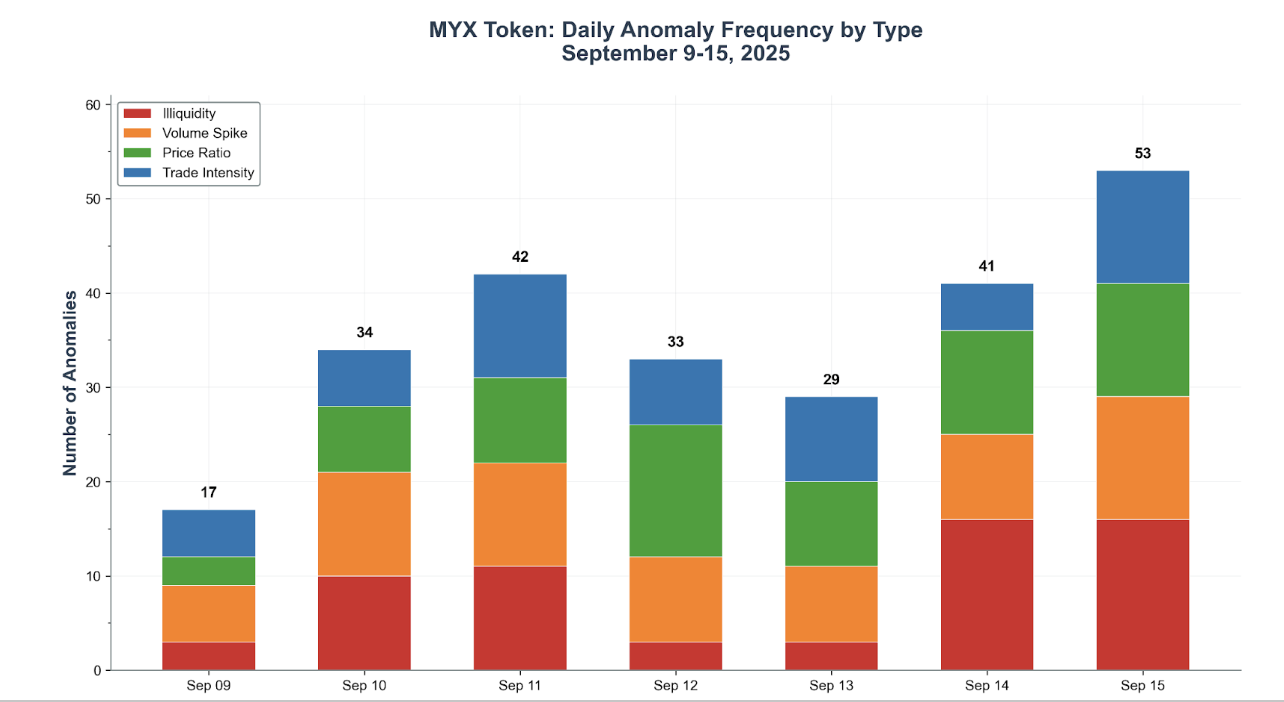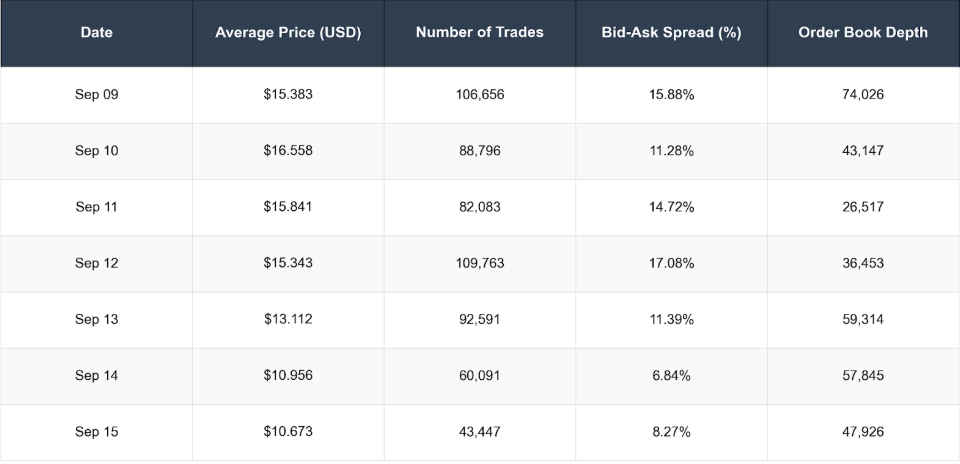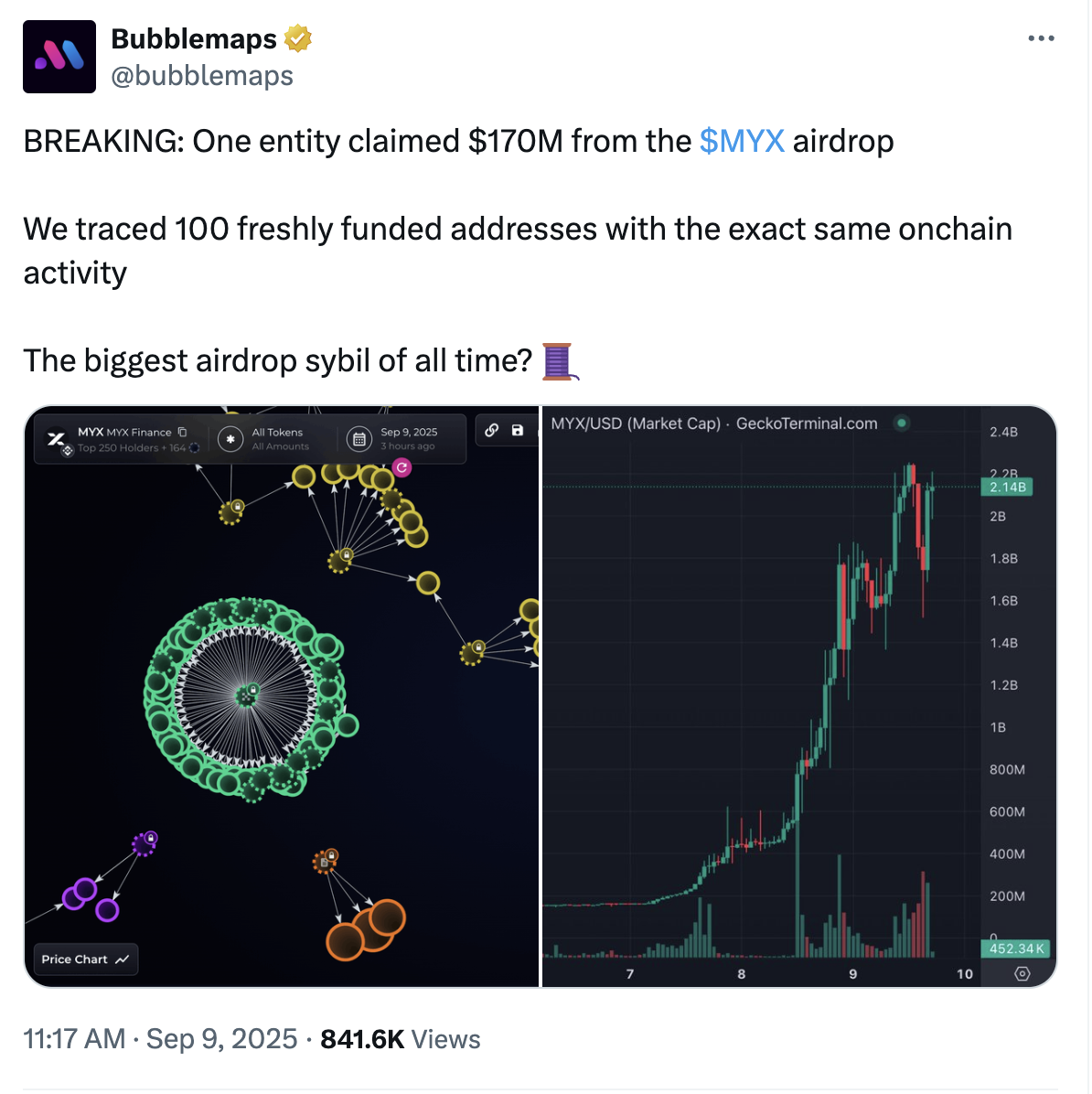MYX token manipulation appears likely: minute-by-minute analysis by Rena Labs and Insider.Cash found synchronized illiquidity, volume spikes, price ratio distortions and trade-intensity anomalies, indicating coordinated market manipulation rather than organic trading for the MYX token.
-
433% liquidity spike and 32 illiquidity events on Sept. 9–10
-
Average trade sizes dropped 67% and trade frequency fell 45% during peak anomalies
-
Bid-ask spreads paradoxically contracted to 8.2% from 15.8%, signaling coordinated manipulation
MYX token manipulation evidence shows synchronized anomalies across liquidity, volume and spreads; read analysis and protections. Learn what to watch and next steps.
Spokespersons from Rena Labs said minute-level analysis revealed patterns in MYX trading consistent with coordinated market manipulation across multiple exchanges and metrics.
What is the evidence for MYX token manipulation?
MYX token manipulation evidence derives from minute-by-minute market-microstructure analysis showing synchronized deviations across illiquidity, volume spikes, price ratios and trade intensity. Rena Labs and Insider.Cash compiled 9,200+ data points and found patterns unlikely under organic trading conditions.
Rena Labs and market intelligence provider Insider.Cash analyzed 9,200+ minute-level data points between Sept. 9 and Monday and identified 249 trading anomalies. These anomalies included illiquidity spikes, abnormal volume bursts, distorted price ratios, and sharp changes in trade intensity.

How did liquidity and trade metrics change during the anomalies?
MYX liquidity anomalies on the Gate exchange spiked 433% on Sept. 9, with 32 illiquidity events recorded across Sunday and Monday. Average trade sizes contracted by 67% during peak illiquidity and trading frequency fell roughly 45%, dropping from 157 to 86 trades per minute.
Bid-ask spreads behaved paradoxically: they contracted to 8.2% on Monday from 15.8% on Sept. 9. Normally, spreads widen when liquidity dries up; the synchronized contraction amid other illiquidity signals is a red flag for coordinated activity.

Why do analysts call this coordinated manipulation?
Rena Labs concluded the chance of all four metric groups (illiquidity, volume spikes, price ratios, trade intensity) deviating simultaneously was below 0.001%. That statistical improbability, combined with temporal synchronization, led researchers to characterize the behavior as coordinated, multi-vector manipulation rather than organic trading.
Researchers wrote: “The temporal synchronization of these extreme deviations across otherwise independent market microstructure metrics strongly suggests coordinated, multi-vector manipulation strategies, rather than organic trading activity driven by fundamental news or natural market forces.”
What other alerts have surfaced about the MYX airdrop?
Blockchain analytics platform Bubblemaps reported a suspected Sybil attack tied to the MYX token airdrop on Sept. 9. Bubblemaps stated that one entity controlling roughly 100 newly funded wallets claimed over 9.8 million MYX tokens and realized an estimated $170 million profit from the airdrop.

How can traders spot similar token-manipulation patterns?
Watch for synchronized deviations across multiple microstructure metrics: sudden illiquidity spikes, compressed average trade sizes, abrupt volume surges, and counterintuitive bid-ask spread moves. Cross-check on-chain airdrop distributions for clustering that suggests Sybil behavior.
| Metric | Observed Change |
|---|---|
| Liquidity spike (Gate) | +433% on Sept. 9 |
| Illiquidity events | 32 events (Sun–Mon) |
| Avg trade size | −67% at peak illiquidity |
| Trade frequency | −45% (157 → 86 trades/min) |
| Bid-ask spread | 15.8% → 8.2% (paradoxical contraction) |
Frequently Asked Questions
How likely is organic trading to produce these patterns?
Rena Labs estimated the probability of these four metric groups deviating simultaneously at below 0.001%, making organic trading an extremely unlikely explanation for the observed patterns.
What should exchanges and regulators watch for?
Exchanges and regulators should monitor synchronized minute-level anomalies across markets, investigate clustered wallet behavior after airdrops, and require market-maker activity disclosures when liquidity profiles change sharply.
Key Takeaways
- Synchronized anomalies: Multiple metrics deviated in lockstep, indicating coordinated action.
- Statistical improbability: Rena Labs reports a <0.001% chance of organic causation for all anomalies.
- Practical defense: Traders should monitor minute-level data, on-chain distribution and cross-exchange signals to protect positions.
Conclusion
This analysis consolidates Rena Labs and Insider.Cash findings and Bubblemaps airdrop alerts to show strong evidence pointing to MYX token manipulation. Market participants should treat synchronized microstructure anomalies and clustered airdrop claims as high-risk signals and act accordingly. COINOTAG will monitor updates and publish further analysis as new data emerges.
